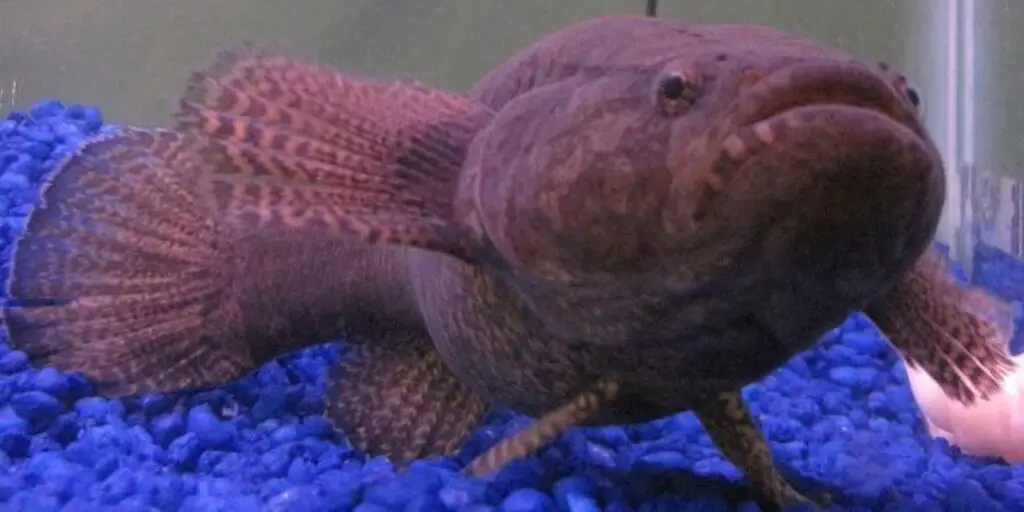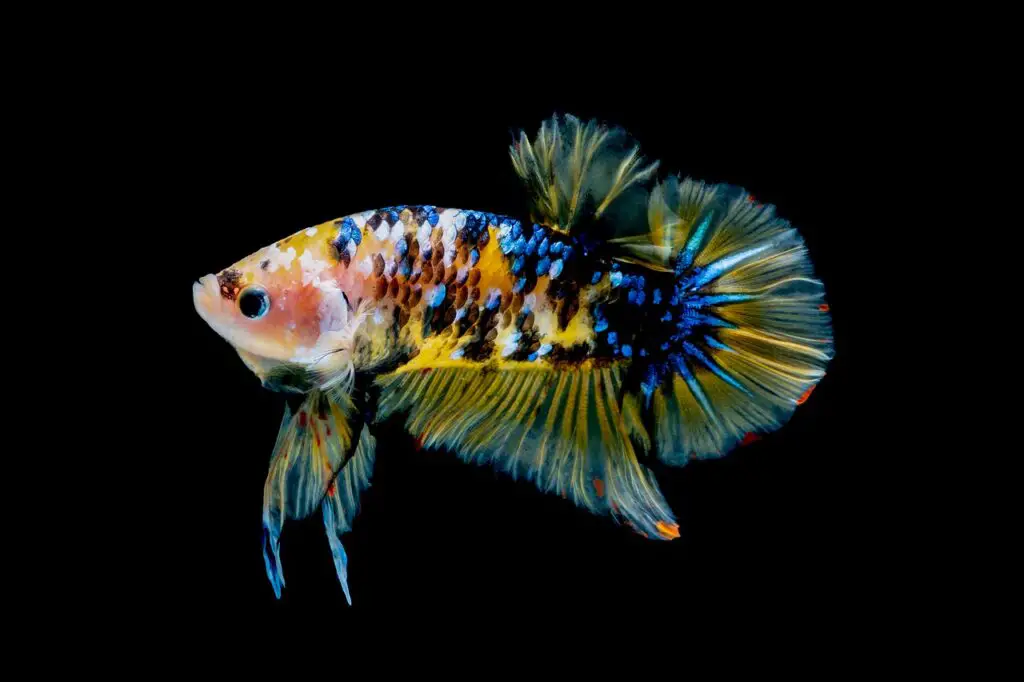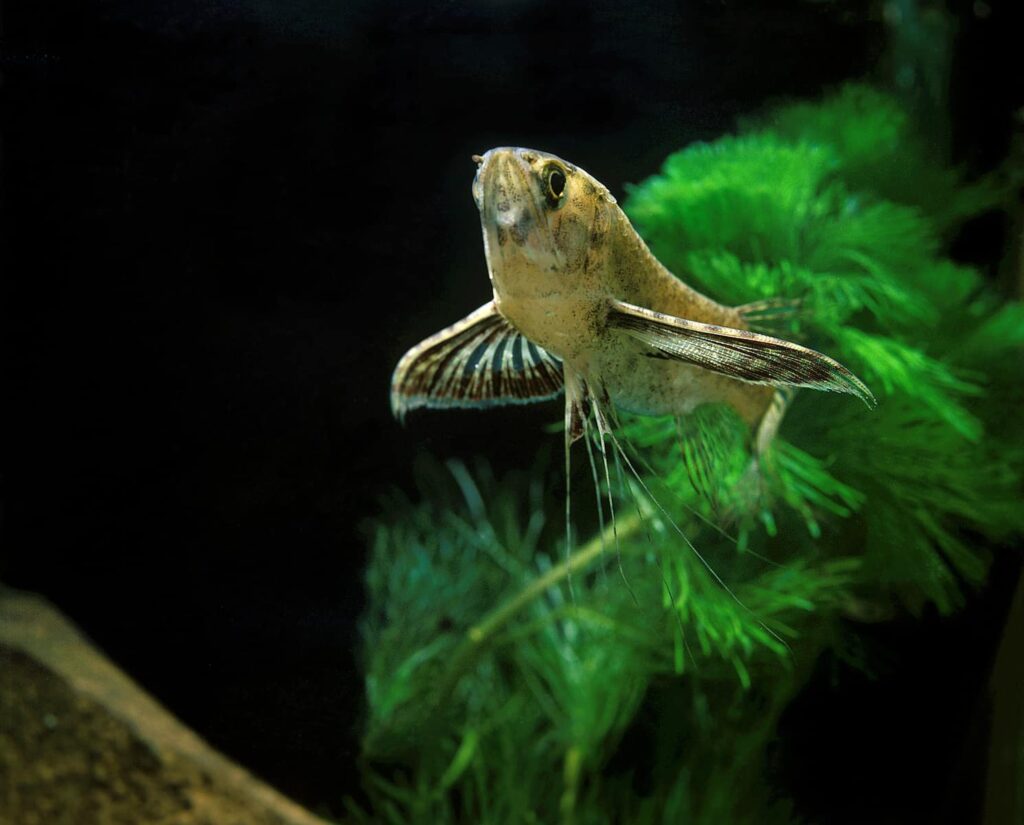This big, beautiful giant of the Goby family is one of the most sought-after species by tropical fish enthusiasts. It tends to live across the Indo Pacific into Hawaii, and as you might expect, it’s a fish that enjoys brackish waters. The Water Cow Goby is a little different to many other Gobies in that it is so massive. However, that doesn’t make it a brute!
The Water Cow Goby has a docile temperament and is actually known by many different names. Let’s take a closer look at this fish and what you need to know about keeping them in your own brackish tank at home.
- Fish Lifespan: More Than 8 Years
- Tank Size: At Least 100 Gallons
- Water Temperature: Between 73F and 82F
- pH: Between 7.4 and 8.2
- Hardness: Between 10 and 30 dH
- Compatibility: Compatible with Own Species
- Fish Size: Up to 10 Inches
How do you take care of water cow fish?
The Water Cow Goby is a wild fish that tends to spend most of its time scooting around the bottom of the waterbed, looking for prey. This makes it a bit of an easy keeper on the surface, but deep down, you’re going to need to be careful with who you bring into their tank!
The Water Cow Goby is a fish that we’d generally advise that you keep on their own, mainly because they will sleepily eat anything that comes into its path providing it fits in their gaping mouths. That’s quite a few fish, including other Gobies! In fact, the sheer size of an adult Water Cow Goby means you’re probably going to need to raise them as youngsters in a small, exclusive tank to begin with, before moving them into an adult tank on their own.
It’s worth remembering that the Water Cow Goby is a wild fish and therefore isn’t tank-bred. That’s why it’s not always the best pick for home raising, though they can still be very rewarding pets. However, many people make the mistake of assuming that they are super laid-back and therefore perfect in a community. As mentioned, if you have other fish swimming around that are smaller than the Water Cow Goby, they will get eaten.
The best thing to do with Water Cow Goby, or Sleeper Fish as they are sometimes called, is to introduce them to others of their own kind in a special tank. Or you might be able to get them acquainted with bigger, equally peaceful critters in a huge tank. The choice is yours!
However, these fish only ever need feeding once a day, and what’s more, we probably wouldn’t recommend them to beginners. When you have a few years of tank keeping behind you, it’s well worth considering this blissful beast.
What type of fish is a water cow?
The Water Cow Goby actually goes by lots of different names. Some people might not even realise they are gobies at all!
The Water Cow Goby is sometimes called the Sleeper Fish, the Spinycheek Sleeper, and the Spotted Sleep Goby. Why so many names? We’re not entirely sure. In any case, you are dealing with the same beast.
One of the biggest of all the Gobies, this fish is generally spotted by its dark colourings as well as its hefty length, and you’ll normally find them to have two stripes across their cheeks. It’s generally a really robust looking fish, meaning you can expect it to hold its own. That’s one of the main reasons why it’s never a good idea to mix them with anything smaller!
The Water Cow Goby is a little rarer than most other Gobies you’ll come across, which is why it might not always be so simple to find information on looking after these animals online. However, they are a fantastic brackish tank staple, meaning it’s likely more and more how-tos on caring for these beasts will be popping up over time.
How big do water cow Goby get?
The Water Cow Goby tends to be known as a bit of a big beast amongst Gobies and indeed other brackish fish in general. In captivity, it’s known to reach 10 inches in length.
As mentioned earlier in the guide, it is sometimes prudent to consider raising the Water Cow Goby in a growing tank where it can grow to full length. You never really know how long many tropical fish will actually get, and with the potential for Water Cow Goby to be so massive, it’s probably worth moving them from a childhood tank over to an adult aquarium.
You may find that Water Cow Goby can be a lot smaller, too. In the wild, some of these swimmers never get to the full length described here, but when planning for any kind of tropical fish, you must always keep the max size in mind – as it really does help when lining up that perfect tank!
Always consider getting a Water Cow Goby if you have a large tank or if you want to raise them in a species only community. As mentioned, the sheer size of the Water Cow Goby means that anything meaty that’s smaller than them is going to end up as fish food. It’s never a good idea to assume this Goby is a community fish, so it’s never a good idea to treat it as such.
Don’t be surprised if your Water Cow Goby grows to a large size, but then again, don’t be disappointed if it falls short of that famous 10 inches.
What size tank do cowfish need?
Herein lies the issue! To really prepare yourself to take on Water Cow Goby, you’re going to need to consider a tank of at least 100 gallons in volume.
This might sound absolutely massive, but these waterbed dwellers are going to need lots of room to muscle into, and what’s more, it’s going to need to be a tank big enough to house several of the critters if you really want to raise a community of them.
As already mentioned, be careful when it comes to taking on baby Water Cow Goby. If you are able to breed them, it is normally prudent to split the young off into separate tanks so they can grow to full size. Then, you can bring the adult Water Cow Goby into a larger tank.
The Water Cow Goby’s size and tank demands might give it a reputation for being a bit of a bruiser. However, that’s really not the case. It’s going to be a lovely addition to your tank thanks to its great attitude but do keep in mind that a fish this size is always going to be right at the top of the food chain. It’s big, but hardly boisterous – though that really doesn’t mean you can or should skimp on the size of tank you prepare for it.
What does a cowfish eat?
Where do you start? A Water Cow Goby is going to eat pretty much everything meaty that’s smaller than itself, or that which will fit into its mouth. If you’ve ever seen a Water Cow Goby up close, you will likely know that this does not narrow down the field too much!
The Water Cow Goby is a committed carnivore. You will not find it vacuuming up algae or bits of vegetation. It needs a balanced diet with protein rich meat. You might find that serving live food as well as frozen morsels is generally the best idea.
The golden rule, again, is to only ever place a Water Cow Goby in a tank with its own kind, or even bigger fish that are unlikely to eat it. The food chain is nasty business, but you have to prepare for it. It is part and parcel of owning any kind of fish tank, brackish, tropical or otherwise.
Should I get a cowfish Goby?
As with other Gobies, Cow Fish are not always the most difficult to look after. They have great temperaments and are wonderfully docile. However, as a brackish species of fish, and as a result of their size and feeding demands, the Water Cow Goby is still not a fish we could recommend to beginners.
The Water Cow Goby is a great addition to a brackish tank for anyone who has spent time raising fish before, or who may already have their own brackish community elsewhere. As such, you may already be better prepared to cater to the specific water and dietary demands of this creature.
The Water Cow Goby is probably not a good pick for you if you are keen to build up a community tank, for reasons we have gone into above! If you want to host one or two fish that are likely to liven up your brackish aquarium, there may be more exciting picks. That said, the Water Cow Goby is a delightful pet and shouldn’t give you too much of a hard time if you know what to expect.



